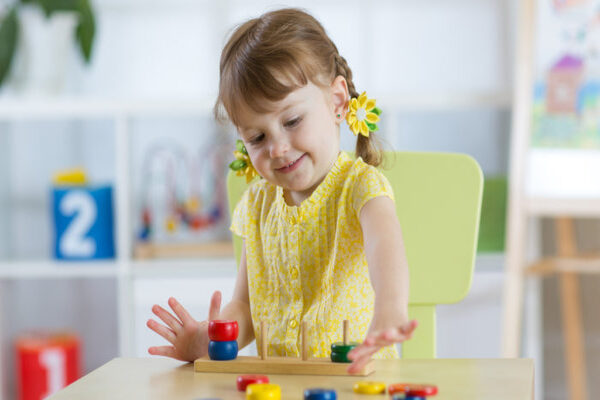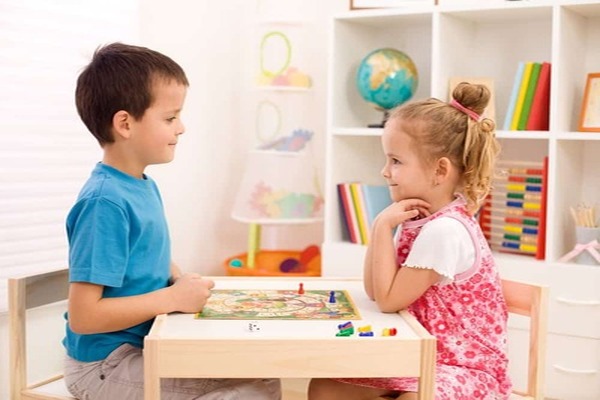Teaching addition to kindergarten students may seem like a daunting task, but with the right approach, it can be a fun and engaging experience for both teachers and students. In this article, we will discuss six steps that teachers can use to teach addition in kindergarten effectively.
Step 1: Define the Concept of Addition
Before starting with addition, it’s important to define the concept of addition to the students. Addition is the process of combining two or more numbers to get a total or a sum. Use concrete examples, such as adding apples or blocks, to make the concept more understandable.
Step 2: Develop Number Sense

Number sense is an essential skill for young students to develop. It refers to the ability to understand the quantity and relationships between numbers. To develop number sense, teachers can use manipulatives such as counters, cubes, and ten frames. These tools help students visualize and understand the concept of numbers and their relationships with one another.
Step 3: Practice with Addition Task Cards
Task cards are a great way to practice addition skills in kindergarten. Teachers can create task cards with addition problems that match the students’ current level of understanding. Students can then work on these cards individually, in pairs, or in small groups.
Step 4: Play Addition Games

Playing games is an excellent way to engage students while teaching addition. Teachers can use games like “Addition Bingo” or “Roll and Add” to make the learning experience more fun and interactive.
Step 5: Use Addition Songs
Music is a great way to help students memorize addition facts. Here are some popular addition songs that teachers can use in their kindergarten classrooms:
Let’s Learn Our Addition Facts 1 – Jack Hartmann
I Can Say My Number Pairs 10 – Jack Hartmann
I Like To Make 10 – Harry Kindergarten
Friends of 10 – Jack Hartmann
That Makes 10 (Addition) – Fun Songs with Umigo
How Many More to Make 10 – Harry Kindergarten
Step 6: Employ the Tactic of Repetition
Repetition is key when it comes to teaching addition in kindergarten. Teachers should provide plenty of opportunities for students to practice their addition skills. This could include daily practice worksheets, additional games, and activities that reinforce the concept of addition.
How to Teach Addition in Kindergarten: Conclusion
In conclusion, teaching addition to kindergarten students can be a fun and engaging experience if done correctly. By following the six steps outlined in this article, teachers can help their students develop a strong foundation in addition that will serve them well as they progress through their academic career.
FAQ
How do you make addition fun for kindergarten?
There are many ways to make addition fun for kindergarten students. Teachers can use games, manipulatives, and music to engage students and make the learning experience more enjoyable.
Why do we teach addition to kindergarten?
Teaching addition to kindergarten students is essential because it helps them develop foundational math skills that will be important for their future academic and personal success.
Best methods for repeating addition in kindergarten?
Repetition is key when it comes to teaching addition in kindergarten. Teachers should provide plenty of opportunities for students to practice their addition skills. This could include daily practice worksheets, additional games, and activities that reinforce the concept of addition.
FAQ
What are the best ways to teach addition in kindergarten?
There are several effective ways to teach addition in kindergarten, including using manipulatives, incorporating games and activities, providing visual aids, and reinforcing concepts through repetition and practice.
What manipulatives are helpful for teaching addition in kindergarten?
Manipulatives such as counting cubes, toy cars, and colored counters are helpful for teaching addition in kindergarten. They allow students to physically see and manipulate the objects to understand addition concepts.
How can I make addition fun for my kindergartener?
Adding fun games, songs, and stories to the lesson plan can make addition more engaging for kindergarteners. Incorporating visual aids like stickers and illustrations can also help make addition more interesting.
What are some common mistakes kindergarteners make when learning addition?
Some common mistakes include mixing up addition and subtraction, forgetting to carry over, and adding incorrectly. To help address these issues, teachers and parents can provide clear explanations and plenty of practice opportunities.
How can I track my kindergartener’s progress with addition?
Keeping track of your child’s progress with addition can be done through regular assessments and evaluations. This can help identify areas where they may need more practice or support, and also provide a sense of achievement as they make progress.